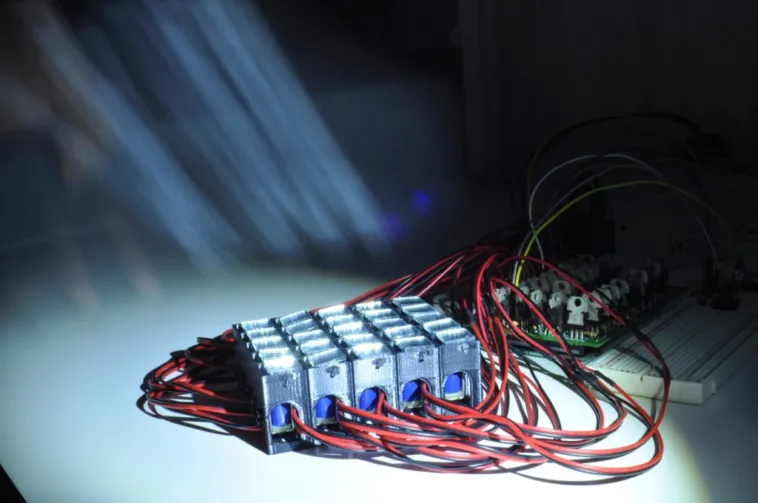
Digital light processing (DLP) devices, which we often see in digital projectors, work by reflecting light off of a two-dimensional array of many thousands — or even millions — of moving mirrors. For that to be practical, each mirror must be microscopic and that makes it very difficult to see and understand the way a DLP device functions. To make that more intuitive, Jon Bumstead scaled up a mirror array to build a “macro” DLP mirror device.
Bumstead’s DLP mirror device only has 25 mirrors arranged in a 5×5 grid, so the resolution is too low to be of any use for displays. But the large size makes this the perfect educational demonstration, because users can easily see how the device operates. Each mirror can pivot to one of two states. The first state angles the mirror so light reflects out to where a lens would be. The second state angles the mirror inwards, so light reflects to where an absorbent pad would be. The first state is an “on” pixel and the second state is an “off” pixel. A real DLP device can switch between states fast enough to create shades of gray and the light would go through filters to introduce color.

Each mirror in the macro DLP device is a square half an inch to a side. Mini push-pull solenoids actuate the mirrors between states and an Arduino Mega 2560 board controls those solenoids through transistors on a custom PCB shield. The frame and mechanical components were 3D-printed to keep costs down.
This device isn’t practical for a display, but it is functional and works great as a tangible illustration of DLP technology. In a hazy room, users can see the reflected rays of light in order to grasp the underlying concept.
The post Macro DLP mirror array scales up a fascinating mechanical structure appeared first on Arduino Blog.
Website: LINK


